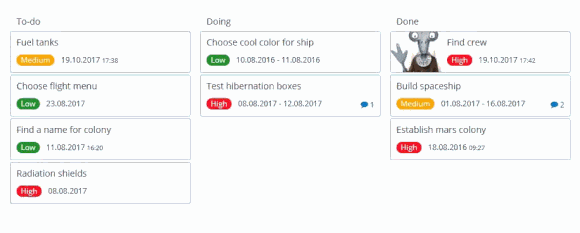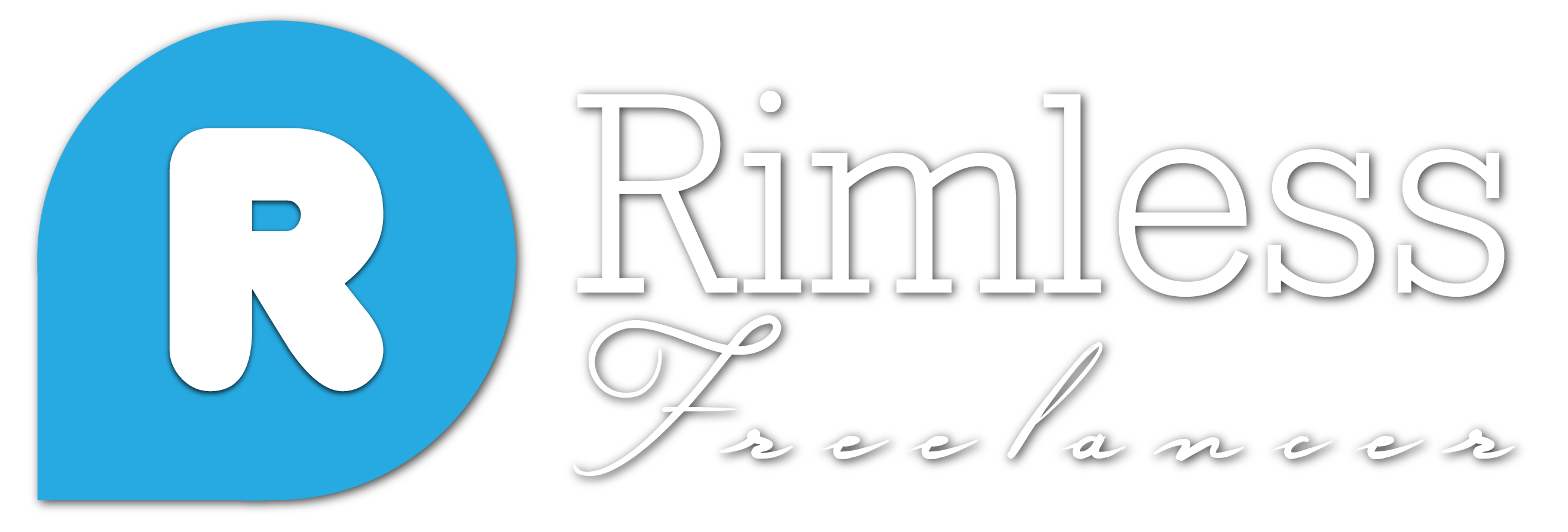7 Project Management Methodologies

1. Agile
One of the more recognizable project management methodologies, Agile is best suited for projects that are iterative and incremental. It’s a type of process where demands and solutions evolve through the collaborative effort of self-organizing and cross-functional teams and their customers.
Values
- Individuals and interactions over processes and tools
- Working software over comprehensive documentation
- Customer collaboration over contract negotiation
- Responding to change over following a plan
Principles
- Customer satisfaction through early and continuous software delivery
- Accommodate changing requirements throughout the development process
- Frequent delivery of working software
- Collaboration between the business stakeholders and developers throughout the project
- Support, trust, and motivate the people involved
- Enable face-to-face interactions
- Working software is the primary measure of progress
- Agile processes to support a consistent development pace
- Attention to technical detail and design enhances agility
- Simplicity
- Self-organizing teams encourage great architectures, requirements, and designs
- Regular reflections on how to become more effective.
2. Scrum
Scrum is comprised of five values: commitment, courage, focus, openness, and respect. It’s goal is to develop, deliver, and sustain complex products through collaboration, accountability, and iterative progress. What distinguishes Scrum from the other Agile project management methodologies is how it operates by using certain roles, events, and artifacts.
Scrum team roles
- Product owner: Product expert who represents the stakeholders, and is the voice of the customer.
- Development team: Group of professionals who deliver the product (developers, programmers, designers).
- Scrum master: Organized servant-leader who ensures the understanding and execution of Scrum is followed.
3. Kanban
Kanban is another popular Agile framework that, similar to Scrum, focuses on early releases with collaborative and self-managing teams. A concept that was developed on the production line of Toyota factories in the 1940s, it is very visual method that aims to deliver high quality results by painting a picture of the workflow process so that bottlenecks can be identified early on in the development process. It operates on six general practices, which are:
- Visualization
- Limiting work in progress
- Flow management
- Making policies explicit
- Using feedback loops
- Collaborative or experimental evolution

4. Lean
Lean methodology promotes maximizing customer value, while minimizing waste. It aims to create more value for the customer by using fewer resources. Stemmed from the Japanese manufacturing industry, its values suppose that ‘as waste is eliminated, quality improves while the production time and cost are reduced.’
It identifies three types of waste; muda, mura, and muri, also known as the 3Ms.
Muda
Muda is about getting rid of waste, and refers to an activity or process that does not add value. It can either be something that is a physical waste of your time or something that is a waste of your resources. Characterized as seven original wastes, they are:
- ‘Transport: The movement of product between operations and locations.
- Inventory: The work in progress (WIP) and stocks of finished goods and raw materials that a company holds.
- Motion: The physical movement of a person or machine whilst conducting an operation.
- Waiting: The act of waiting for a machine to finish, for a product to arrive, or any other cause.
- Overproduction: Over producing product beyond what the customer has ordered.
- Over-processing: Conducting operations beyond those that customer requires.
- Defects: Product rejects and reworks within your processes.’
Mura
Mura is about eliminating variances in the workflow process at a scheduling and operation level so that everything flows evenly. For example, when publishing a magazine, if an editor spends too much time editing an article, it means that the design team will have less time to create the spread before the publishing deadline comes. Therefore, you would reduce the editing time and ensure every department’s timeframe spent on the article is the same.
Muri
Muri is about removing overload so that the nothing slows down. It refers to managers and business owners imposing unnecessary stress on their employees and processes due to things such as poor organization, unclear ways of working, and using incorrect tools.
Instead of implementing certain processes, Lean is more about adhering to a set of principles. The five main principles are; specify value by the customer, identify steps in the value stream, make product flow continuously, allow customers pull value from the next upstream activity, and manage towards removing unnecessary steps.
Best suited for: Often mistaken for specializing in manufacturing industries, Lean methodology is ideal for any business or organization that is not looking for a process as such, but is interested in transforming how they conduct doing business.
5. Waterfall
One of the more traditional project management methodologies, Waterfall is a linear, sequential design approach where progress flows downwards in one direction — like a waterfall. Originating in the manufacturing and construction industries, its lack of flexibility in design changes in the earlier stages of the development process is due to it becoming exuberantly more expensive because of its structured physical environments.
The methodology was first introduced in an article written in 1970 by Winston W. Royce (although the term ‘Waterfall’ wasn’t used), and emphasizes that you’re only able to move onto the next phase of development once the current phase has been completed. The phases are followed in the following order:
- System and software requirements
- Analysis
- Design
- Coding
- Testing
- Operations
Waterfall is a project management methodology that stresses the importance of documentation. The idea is that if a worker was to leave during the development process, their replacement can start where they left off by familiarizing themselves with the information provided on the documents.
Pre-Agile saw the Waterfall methodology being used for software development, but there were many issues due to its non-adaptive design constraints, the lack of customer feedback available during the development process, and a delayed testing period.
Best suited for: Larger projects that require maintaining stringent stages and deadlines, or projects that have been done various times over where chances of surprises during the development process are relatively low.
6. Six Sigma
Six Sigma is project management methodology first introduced by engineers at Motorola in 1986. It aims to improve quality by reducing the number of errors in a process by identifying what is not working and then removing it from the process. It uses quality management methods, which are mostly empirical and statistical, as well as the expertise of people who are specialists in these methods.
There are two major methodologies of Six Sigma carried out by Six Sigma Green Belts and Six Sigma Black Belts, and are supervised by Six Sigma Master Black Belts. They are DMAIC which is used for improving business processes, and DMADV which is more for creating new processes, products or services. The letters stand for:
‘Define the problem and the project goals
Measure in detail the various aspects of the current process
Analyze data to, among other things, find the root defects in a process
Improve the process
Control how the process is done in the future’
‘Define the project goals
Measure critical components of the process and the product capabilities
Analyze the data and develop various designs for the process, eventually picking the best one
Design and test details of the process
Verify the design by running simulations and a pilot program, and then handing over the process to the client’
There is also a Lean Six Sigma methodology which is committed to improving team performance by systematically eliminating waste and reducing variation.
Best suited for: Larger companies and organizations that want to improve quality and efficiency through a data-driven methodology.
7. PMI/PMBOK
PMI stands for the Project Management Institute which is a not-for-profit membership association, project management certification, and standards organization. Through the PMI, comes the PMBOK which is not quite a methodology but a guide detailing a set of standards that characterize project management.
PMBOK stands for the Project Management Body of Knowledge and is a set of standard terminology and guidelines for project management. It states that there are five process groups that are prevalent in almost every project. They are;
- Initiating: Defining the start of a new project or new phase of an existing project.
- Planning: Where the scope of the project, objectives, and how the objectives will be achieved.
- Executing: Actually doing the work defined in the project management plan.
- Monitoring and Controlling: When you need to track, review, and regulate the progress and performance.
- Closing: Concluding all activities across all Process Groups to formally close the project or phrase.
Along with this, it includes best practices, conventions, and techniques that are considered the industry standard. Regularly updating their guide to ensure that they echo the most up-to-date project management practices, the PMBOK is currently up to its sixth edition which was published in print and online in 2017.
Best suited for: Because it’s more of a reference guide than an actual project management methodology, you can’t implement PMI/PMBOK to a project. However, it can be used for when you want to weigh in on the best practices for your project.
source: zenkit blog
